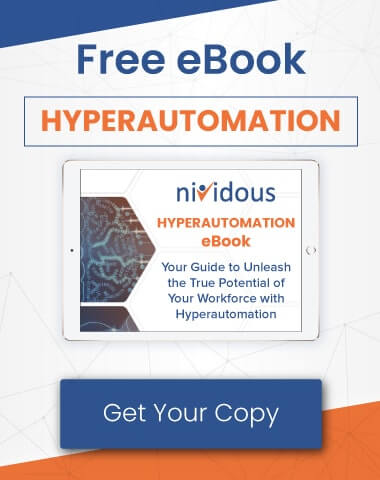Healthcare workers, imagine: What would it be like to log onto a central system and control every aspect of a patient’s data with just a few clicks? No more poring over insurance claim forms, updating charts manually, or double-checking conflicting information to see which version is correct. Your primary responsibility would be patient care, not paperwork.
If you operate or work within a typical hospital or clinic, this might sound like a dream.
Unfortunately, most hospital systems don’t work this way.
Healthcare systems are notorious for their complexity. Hospital systems in particular pull from several different places at once — whichever programs the hospital uses to manage electronic health records, billing, payment, and insurance, to name just a handful — and it’s unusual for any two of these systems to work seamlessly with another, let alone the whole suite.
And if one hospital wishes to link up with another to transmit information, that’s an even bigger challenge, since both hospitals likely use completely different sets of software to accomplish the same things.
To make matters worse, most of these healthcare programs are closed, proprietary systems released by different companies. They don’t have accessible APIs the hospital could use to build connections, and they don’t offer ways to link up with other programs to sync information. Most of the time, hospital employees are stuck having to manually enter and update data in one program at a time.
Savvy healthcare administrators may reach out to Microsoft or Google and ask if they could build a custom solution, but this almost never works. Even the seemingly all-powerful software companies are locked out of proprietary healthcare systems, for reasons of privacy and patient safety.
Unless you go directly through the company that made the software, it’s extremely hard to connect one piece of the system with another. Most of these companies are small, highly focused outfits that receive many similar requests from hospitals all the time. They usually process these requests in order and have long waiting lists and limited capacity to build customized solutions. And when they do, the price tag will be formidable.
As a result, many hospital administrators are reluctant to even try to pursue interoperability. This is unfortunate, because connecting all these disparate systems together would lead to a huge increase in functionality and open the door for automation and the optimization of workflows.
Connecting all these disparate systems together would lead to a huge increase in functionality and open the door for automation and the optimization of workflows.
That’s why Nividous places such a heavy emphasis on achieving seamless interoperability for our healthcare clients. Interoperability, in this case, is the ability to connect all healthcare programs together into a centralized hub, either within one hospital or between multiple locations.
How does Nividous allow you to achieve interoperability more simply?
Rather than requiring a back door into each proprietary system, Nividous is able to create a layer of abstraction on top of them all that binds them together into a cohesive unit. We use Robotic Process Automation (RPA) bots to interact with each program, pushing data in and pulling data out as needed. That means our RPA bots can transfer data easily between proprietary systems.
Instead of interacting with several different programs for different purposes, healthcare staff can instead pull up a central interface that can control, sync, and, most importantly, automate each system under its umbrella. This central management hub makes it possible to incorporate AI and automate entire end-to-end processes that would otherwise have been far too complex and segregated for run-of-the-mill automation.
Some of the benefits of interoperability in healthcare settings are likely apparent already, but this topic is so important that we believe it’s worthwhile to explore in more depth. The following list of benefits might help you tip the scales in the discussion of whether your organization should pursue interoperability.
Want to Supercharge Your Revenue Cycle Management?
Watch this on-demand webinar to discover how Intelligent Automation can help improve coding accuracy, streamline clinical documentation, and effectively manage compliance risks.
5 Benefits of Healthcare System Interoperability
Here’s what’s possible when you achieve interoperability:
 Increased Efficiency
Increased Efficiency
Healthcare staff willingly spend countless hours poring over patient documents in the interest of providing high-quality care. But the inefficiency of these manual efforts can weigh heavily on workers and lead to fatigue, errors, and low job satisfaction.
Combining all systems into one convenient interface — especially if the system is then automated from that point — cuts down on the massive amount of paperwork usually required for administrative employees. This means tired workers won’t have to waste time entering data manually, copying information from one system to another, double-checking to make sure all systems contain the most recent updates, or performing other tedious tasks.
Automation can also tackle chores such as submitting insurance claims, obtaining pre-authorizations, adding medical codes to patient files, scheduling appointments, and processing payments.
Many of the other benefits on this list stem directly from these increases in efficiency and the automation that interoperability allows.
 Improved Patient Outcomes
Improved Patient Outcomes
With connected systems, healthcare providers will have access to all of a patient’s data within one place. This means there’s far less risk of missing something important that may have been updated in one system but not in another. This accurate picture of each patient’s data can lead to better diagnoses and treatments.
Additionally, since hospital staff won’t have to spend time transferring information from one place to another or manually updating data, they can spend more time interacting with each patient. Higher rates of interaction mean staff are less likely to miss significant symptoms or important details. Less time spent sifting through endless, tedious paperwork also means fewer opportunities for fatigue and repetition-related clerical errors.
 Positive Patient Experiences
Positive Patient Experiences
More time with physicians can go a long way toward boosting a patient’s perception of the hospital and the quality of their care. If a doctor spends several minutes conversing with the patient and their family members, explaining diagnoses, treatment options, and procedure details, patient confidence will be higher and they will be more likely to cooperate with pre-procedure and after-care protocols. This goes hand in hand with the previous point, as it also improves the likelihood of a favorable outcome.
Aside from greater access to physicians, interoperability also opens the door for patients to access their own healthcare records and communicate with providers more easily. For example, if the scheduling system is connected with the records system, which also interfaces with billing and insurance, a patient could book appointments online, receive updated test results or insurance authorizations in real time, and maintain an overall closer connection to their providers.
 Cost Savings
Cost Savings
As the saying goes, time is money. Because interoperability leads to such huge improvements in efficiency, it can save hospitals a significant amount of money. Simply reducing the administrative burden on staff can result in huge savings.
Combining records into one system can also prevent medical errors that arise from incongruence between separate programs, which cuts down on malpractice costs and the need for duplicate testing or repeat procedures.
 Better Population Health
Better Population Health
If several hospitals connect their internal systems together, it makes sharing patient data between networks much easier. This goes beyond the obvious benefit — less hassle for patients transferring records to an out-of-network hospital — and offers physicians an opportunity to identify health trends and emerging patterns on a population level.
If two hospitals in separate parts of the state identified similar outbreaks, it could be noticed and managed much more quickly if those two hospitals could share their data instantaneously. Similarly, hospitals in different areas could pinpoint if a particular demographic started experiencing higher rates of illness, cancer, heart disease, or other issues. Interoperability and communication between healthcare organizations means health officials could identify and stay on top of emerging problems before they would normally hit the news.
Nividous can help you achieve interoperability of your healthcare systems without the hassle.
There’s no need to wait twelve months or more to hear back from your software providers and maybe receive a custom solution — or worse, forgo the benefits of interoperability entirely. Let Nividous connect your systems and open the doors for better efficiency, automation, and more.






